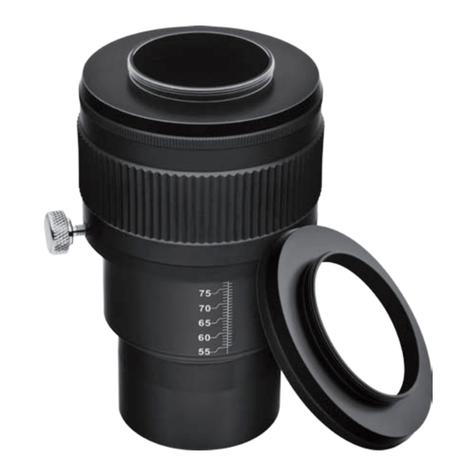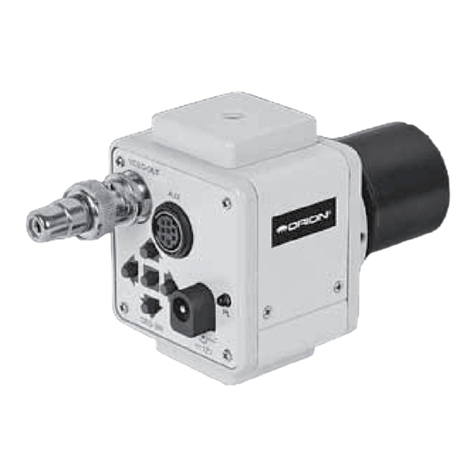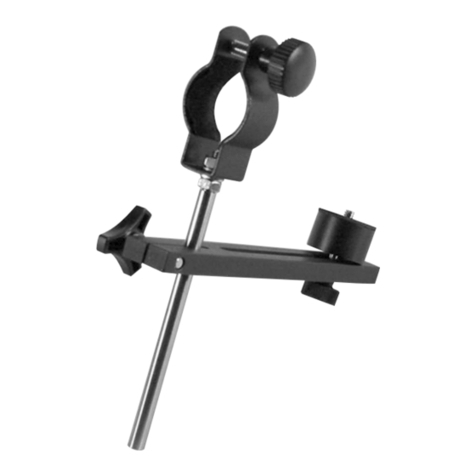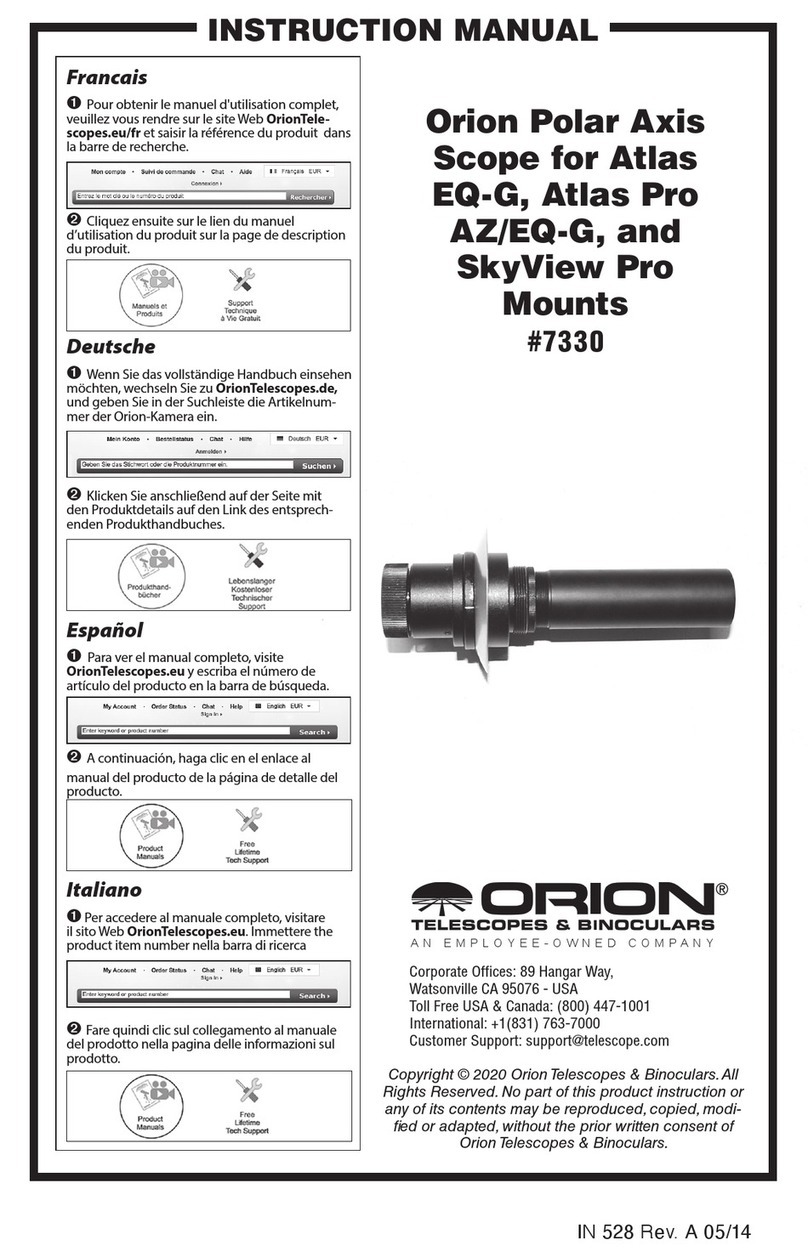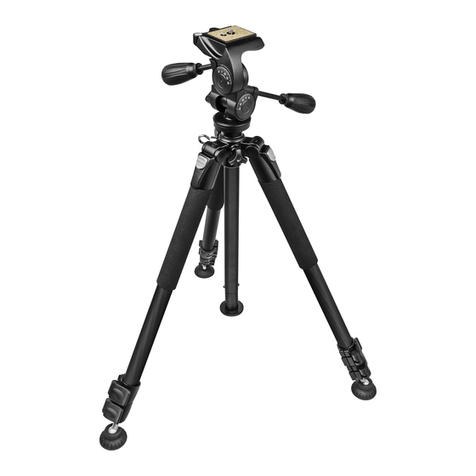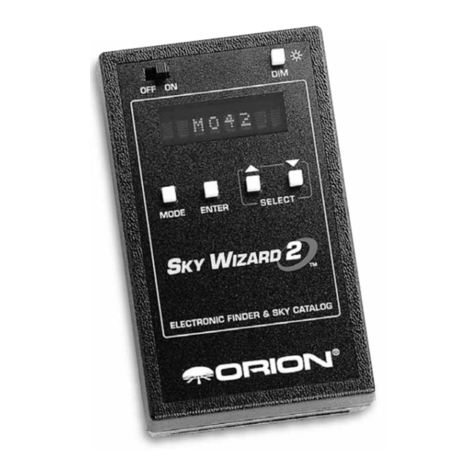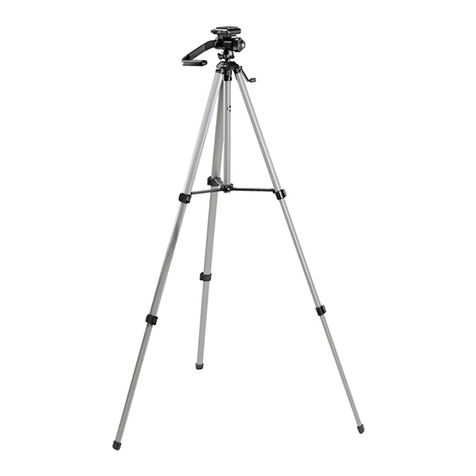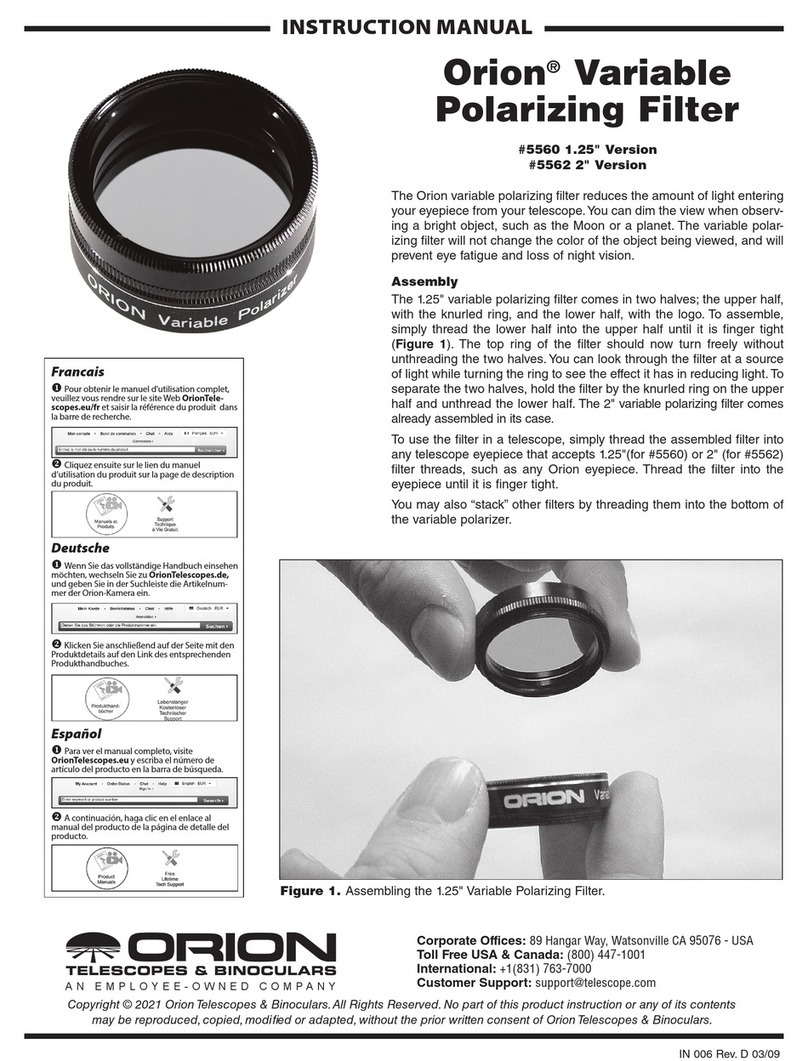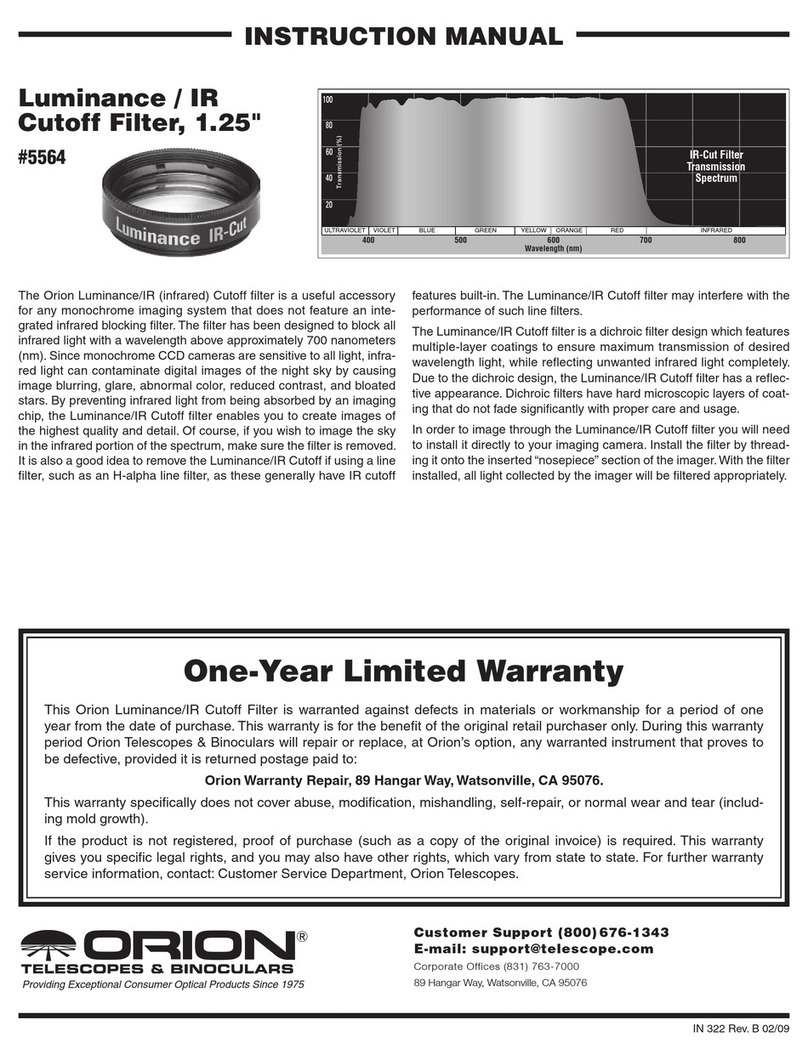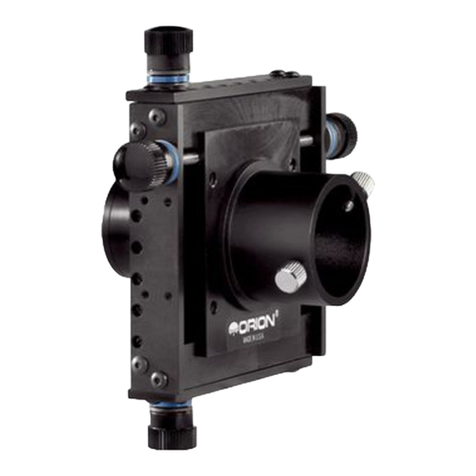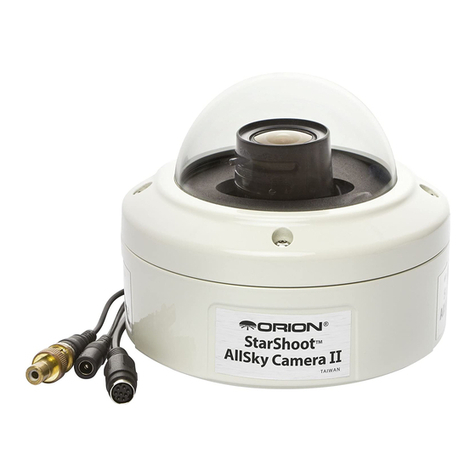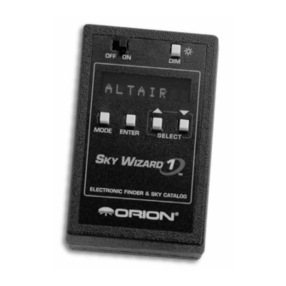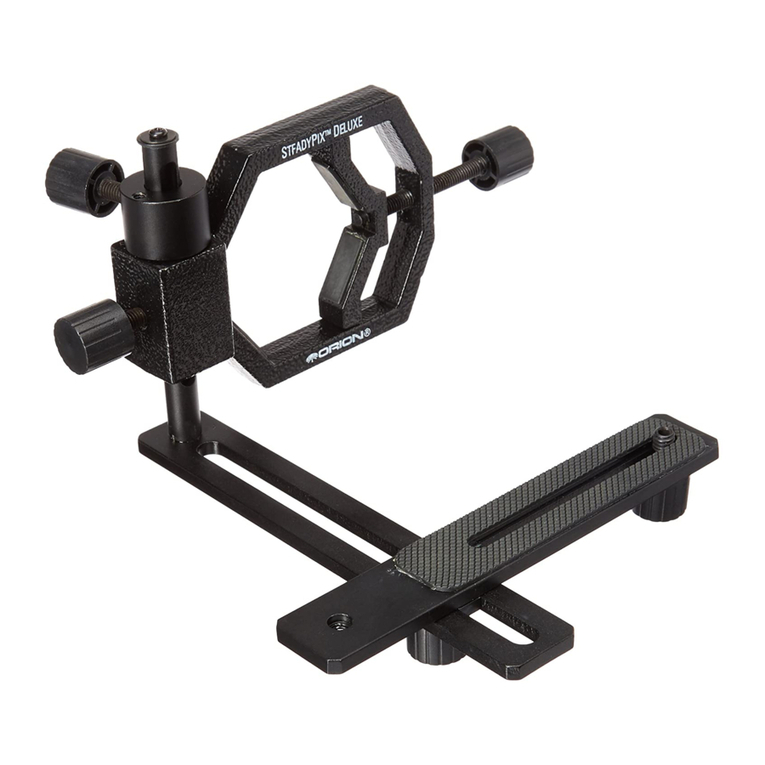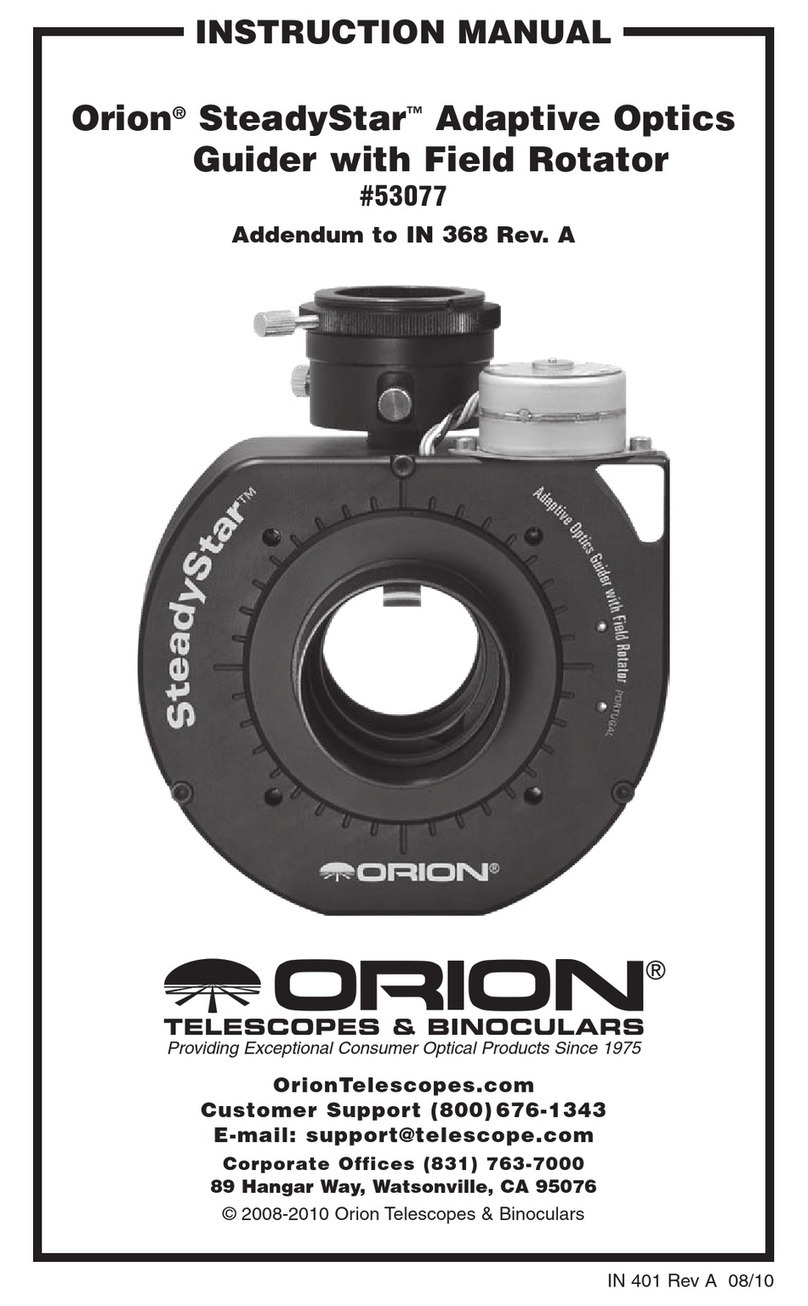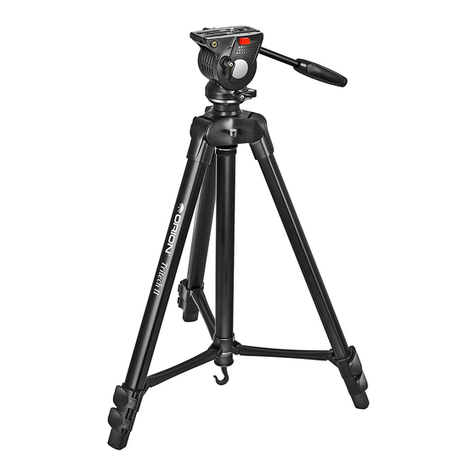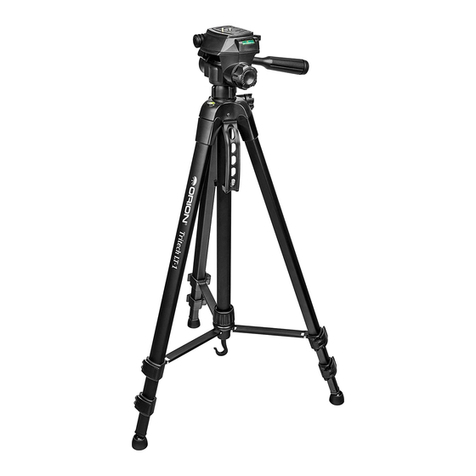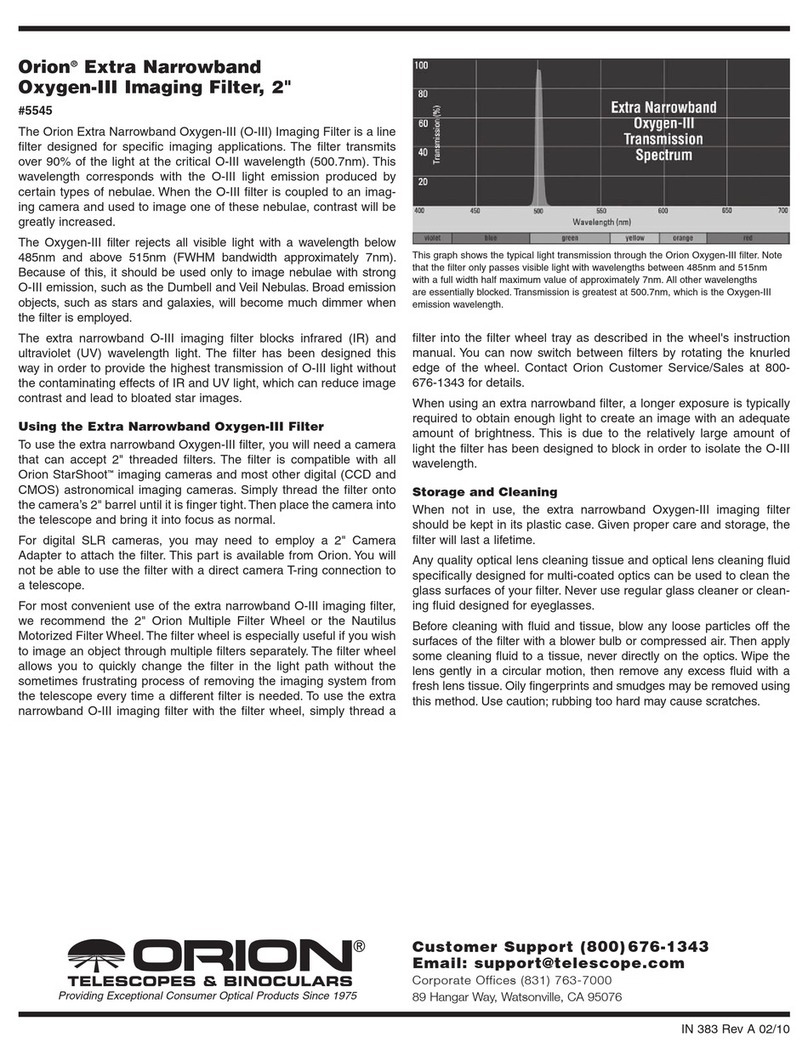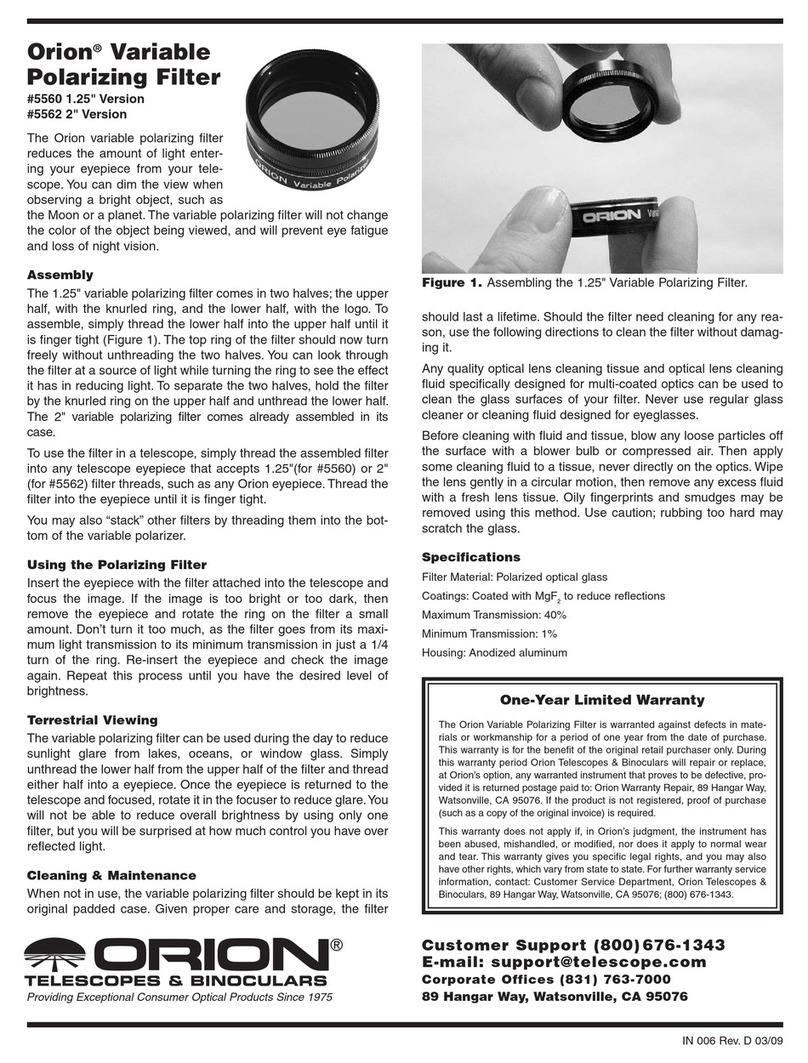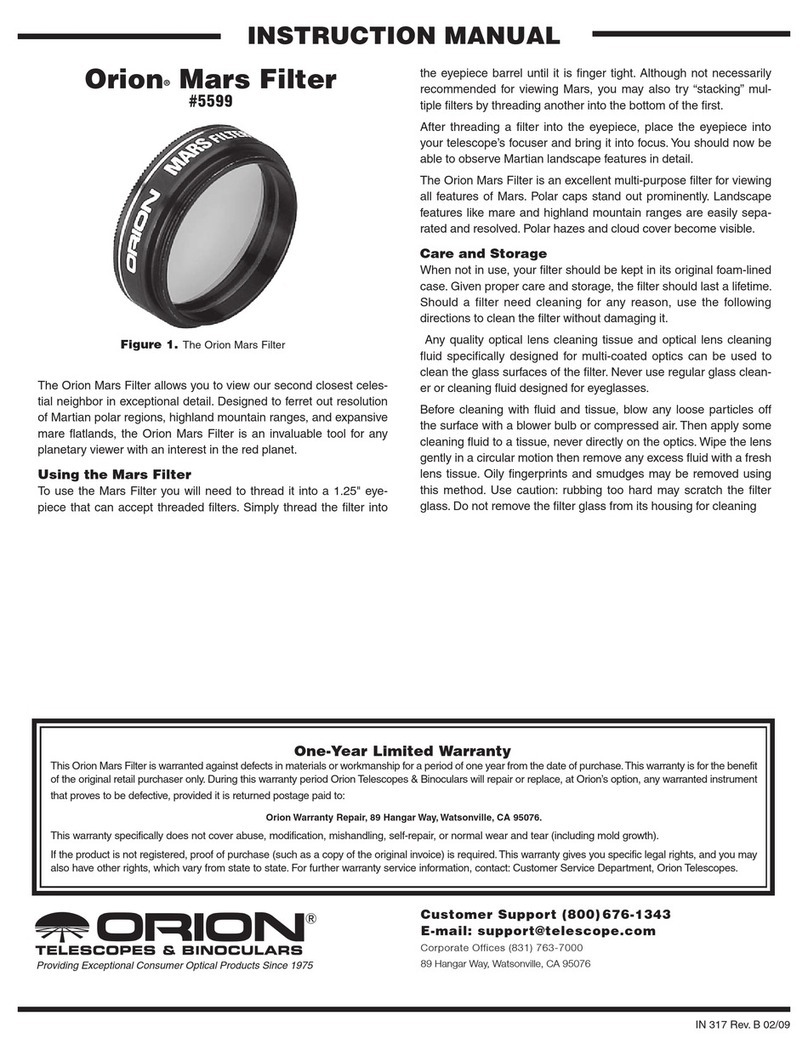
2
Attaching the Field Flattener to a DSLR Camera
The eld attener’s 55mm backfocus distance is designed to work with most DSLR
cameras without the need for any additional extension rings (Figure 2.1). A T-ring
for the make and model of your camera is the only required accessory to attach
the eld attener to your DSLR camera. The ring can be either a standard 42mm
T-ring or a wide 48mm T-ring. The 48mm T-ring, when used with the 48mm adapter
plate of the eld attener, is ideal for use with full-frame camera sensors as it will
reduce the possibility of vignetting, giving you better illumination at the edges of
the sensor
Attaching the Field Flattener to a CCD Camera
Most CCD cameras have a shorter ange focal distance – the distance from the
camera’s lens mounting ange to the focal plane, or sensor—than a DSLR cam-
era. That means you will need to add extension as needed to ll the 55mm of
required distance to the eld attener (Figure 2.2). T-thread extension rings, or
spacers, of different lengths are available separately; you just need to calculate
how much extension is needed for your particular camera. Consult your camera’s
manual to determine the ange focal distance.
For example, if a camera has a ange focal distance of 20mm, i.e., its focal plane
is 20mm behind the lens mounting ange, you would need to add 35mm of space
between the camera and eld attener to achieve the proper distance (20 + 35 =
55mm). Note that if you do not reach 55mm exactly, the eld attener will still work,
but will gradually lose its effectiveness the farther in or out from 55mm your cam-
era is positioned.
Your CCD camera must have compatible 42mm or 48mm female T-threads on the
camera body to attach to the eld attener. Remove the camera’s nosepiece (if it’s
equipped with one) and thread the camera body directly onto the back of the eld
attener or threaded spacer ring.
Care & Maintenance
Care should be exercised when using all optical and mechanical telescope acces-
sories. Keep your eld attener in a protected environment when you’re not using it,
and place the dust cap and threaded metal cap on the Field Flattener for storage.
Avoid touching the lenses and coatings. If the outside of the lens should become
dirty, you may want to clean it. Remove loose dirt with a blower bulb or lens brush.
Use only optical lens tissue and good-quality lens uid. Wet a folded tissue and
gently wipe the surface of the lens. Immediately use a second piece of lens tissue
to gently dry the lens off. Do not rub or apply pressure, as this may scratch the lens
if dust or grit is present.
